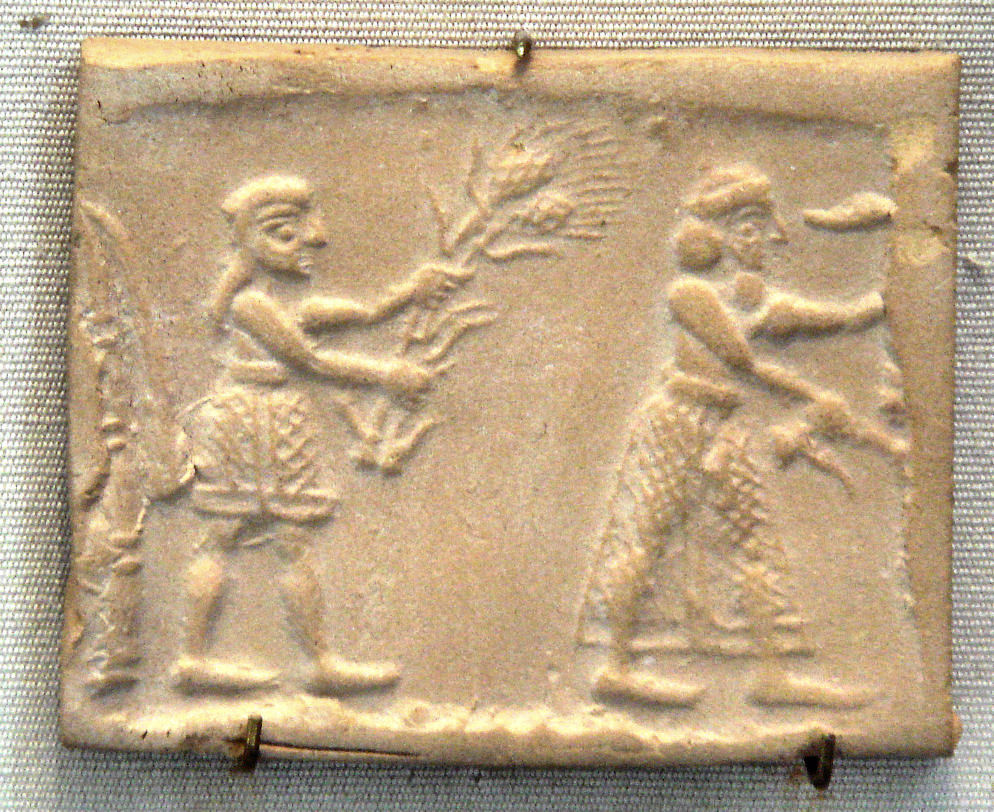Ensí on:
[Wikipedia]
[Google]
[Amazon]

 Ensi (cuneiform: , "lord of the plowland"; Emesal dialect: ''umunsik''; akk, iššakkum, script=Latn, italic=yes) was a Sumerian title designating the ruler or prince of a
Ensi (cuneiform: , "lord of the plowland"; Emesal dialect: ''umunsik''; akk, iššakkum, script=Latn, italic=yes) was a Sumerian title designating the ruler or prince of a

 Ensi (cuneiform: , "lord of the plowland"; Emesal dialect: ''umunsik''; akk, iššakkum, script=Latn, italic=yes) was a Sumerian title designating the ruler or prince of a
Ensi (cuneiform: , "lord of the plowland"; Emesal dialect: ''umunsik''; akk, iššakkum, script=Latn, italic=yes) was a Sumerian title designating the ruler or prince of a city-state
A city-state is an independent sovereign city which serves as the center of political, economic, and cultural life over its contiguous territory. They have existed in many parts of the world since the dawn of history, including cities such as ...
. Originally it may have designated an independent ruler, but in later periods the title presupposed subordinance to a lugal
Lugal ( Sumerian: ) is the Sumerian term for "king, ruler". Literally, the term means "big man." In Sumerian, ''lu'' "𒇽" is "man" and ''gal'' " 𒃲" is "great," or "big."
It was one of several Sumerian titles that a ruler of a city-state coul ...
.
For the Early Dynastic Period (about 2800–2350 BC), the meaning of the titles en, ensi and lugal cannot be differentiated clearly: see lugal, ensi and en for details. Ensi may have originally been a designation of the ruler restricted to Lagash
Lagash (cuneiform: LAGAŠKI; Sumerian: ''Lagaš''), was an ancient city state located northwest of the junction of the Euphrates and Tigris rivers and east of Uruk, about east of the modern town of Ash Shatrah, Iraq. Lagash (modern Al-Hiba) w ...
and Umma
Umma ( sux, ; in modern Dhi Qar Province in Iraq, formerly also called Gishban) was an ancient city in Sumer. There is some scholarly debate about the Sumerian and Akkadian names for this site. Traditionally, Umma was identified with Tell J ...
. The ''ensi'' was considered a representative of the city-state's patron deity. In later periods, an ensi was normally seen as subordinate to a lugal. Nevertheless, even the powerful rulers of the Second Dynasty of Lagash (c. 2100 BC) such as Gudea
Gudea ( Sumerian: , ''Gu3-de2-a'') was a ruler ('' ensi'') of the state of Lagash in Southern Mesopotamia, who ruled circa 2080–2060 BC (short chronology) or 2144-2124 BC ( middle chronology). He probably did not come from the city, but had mar ...
were satisfied with the title ensi.
During the Third Dynasty of Ur
The Third Dynasty of Ur, also called the Neo-Sumerian Empire, refers to a 22nd to 21st century BC ( middle chronology) Sumerian ruling dynasty based in the city of Ur and a short-lived territorial-political state which some historians consider t ...
(about 2100–2000 BC) ensi referred to the provincial governors of the kingdom. These exercised great powers in terms of government, tax revenue and jurisdiction, but they were supervised, installed, and dismissed by the lugal of Ur. Although the office could be inherited, all ensi had to be endorsed by the lugal. No independent foreign policy or warfare was allowed.
In the city-state of Assur, the hereditary ruler bore the Akkadian-language version of the title ensi, while the patron deity was regarded as ''šarrum'' "king".
They held most political power in Sumerian city-states during the Uruk period
The Uruk period (ca. 4000 to 3100 BC; also known as Protoliterate period) existed from the protohistoric Chalcolithic to Early Bronze Age period in the history of Mesopotamia, after the Ubaid period and before the Jemdet Nasr period. Named af ...
(c.4100-2900 BC).Jacobsen, Thorkild (Ed) (1939),"The Sumerian King List" (Oriental Institute of the University of Chicago; Assyriological Studies, No. 11.)
Sources
Sumerian titles Early Dynastic Period (Mesopotamia) {{Royal-stub ca:Sumer#Títols polítics sumeris